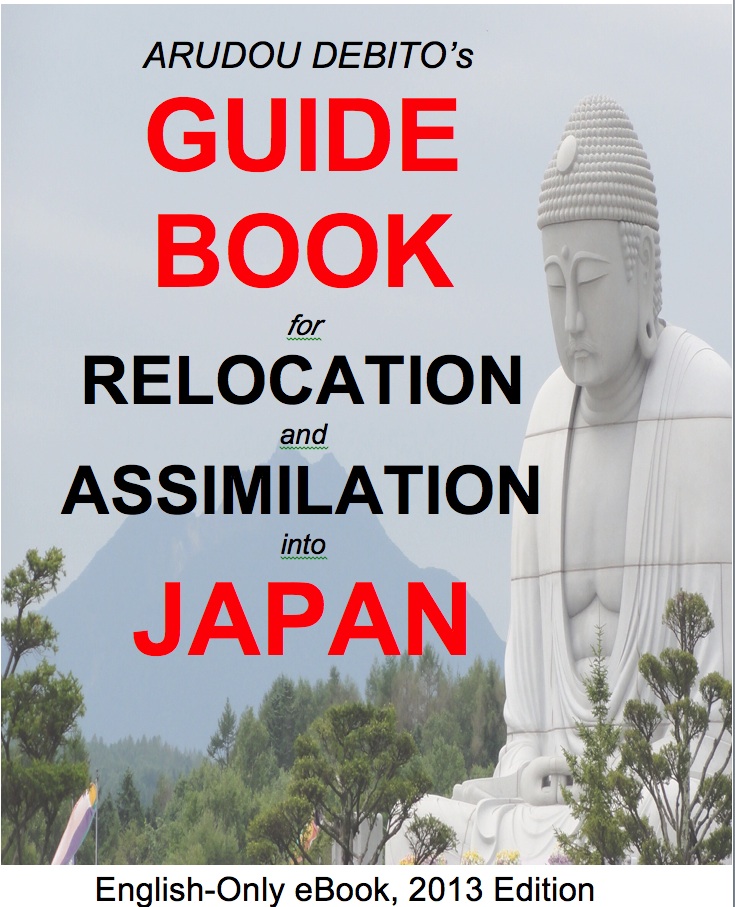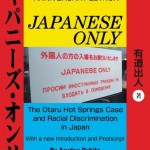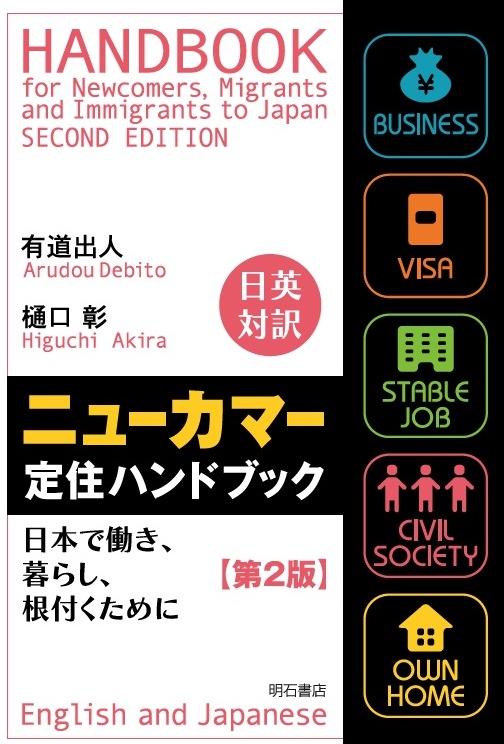mytest
Books, eBooks, and more from Dr. ARUDOU, Debito (click on icon):





![]()


UPDATES ON TWITTER: arudoudebito
DEBITO.ORG PODCASTS on iTunes, subscribe free
“LIKE” US on Facebook at http://www.facebook.com/debitoorg
https://www.facebook.com/embeddedrcsmJapan
http://www.facebook.com/handbookimmigrants
https://www.facebook.com/JapaneseOnlyTheBook
https://www.facebook.com/BookInAppropriate
If you like what you read and discuss on Debito.org, please consider helping us stop hackers and defray maintenance costs with a little donation via my webhoster:

All donations go towards website costs only. Thanks for your support!
Hi Blog. The resurgence of Japan’s import labor regime has resumed in earnest, reaching a record at least in the Postwar Era. (Remember that during WWII, Japan’s internal colonial population, as in workers imported from its colonies, was very high; people from the Korean peninsula alone in 1945 were more than two million.) Now as of 2016, the NJ worker total has hit 1 million, according to Reuters below.
There is some fine print this article should have noted. This “record one million” is of workers, not registered residents alone (which is in fact more than twice the number, at 2.23 million as of 2015), since they have dependents (i.e., spouses with non-work visas and children). But within this one million are people who are not technically “workers” (roudousha), but “Trainees” (kenkyuusei or jisshuusei), who aren’t officially protected by Japan labor laws and are exposed to all manner of abuses, including slavery.
So calling them all “workers” is misleading both in terms of terminology and legal status. Especially since, as the article does rightly note, they are making up 20% of the total, or around 200,000 unprotected NJ laborers. Now that their numbers have shot up by 25% over one year alone, we can expect that 70% of all their employers will likely expose them to labor abuses.
These are not happy statistics, and for the article to lack this degree of nuance (especially since Reuters itself has done marvelous exposes in the past, even calling “Trainee” employers “sweatshops in disguise”) is at this point an institutional memory problem.
Another problem is the article implying that there is any actual attempt to, quote, “open gates to immigrants”. Immigration (imin) has never been part of Japan’s policy calculations (and I challenge the journalists researching this article to find that exact word in any of the cited policy directives; their citing a construction company manager, in the unlikely event that he actually used the word imin, is still indicative of nothing) — only temporary stopgap laborers who will give their best working lives and then be sent home at the first economic downturn. As has happened before, most cruelly.
As much as the article might be trying to attract eyeballs by putting a superlative “record number of” in the headline (and once again sneaking in an angle of hope of actual “immigration” happening), the only change that has happened here is that more NJ are being processed by an exploitative system — one that has by design remained relatively unchanged for nearly three decades, and moreover has been expanded to exploit even more. So many misdirected angles here. Dr. ARUDOU, Debito.
///////////////////////////////////
NATIONAL
Foreign workers in Japan hit the 1 million mark for the first time last autumn: ministry
REUTERS/Japan Times JAN 27, 2017
http://www.japantimes.co.jp/news/2017/01/27/national/foreign-workers-japan-hit-1-million-mark-first-time-last-autumn-ministry/
The number of foreign workers in Japan surpassed 1 million for the first time last year, as the labor-strapped country struggles to find enough Japanese workers.
Slightly over a million foreigners from countries such as China and Vietnam were working here as of October, labor ministry data showed Friday.
That was up nearly 20 percent from the previous year and a new record for the fourth straight year.
The figures suggest Japan is increasingly turning to overseas workers to plug its labor shortages despite its reluctance to accept them.
The country is facing its worst labor crunch since 1991 amid a shrinking and aging population, which has prompted calls from the International Monetary Fund for it to accept more overseas workers to boost economic growth.
Prime Minister Shinzo Abe has said the country should put more Japanese women and the elderly to work first before accepting immigrants, but policymakers are exploring ways to bring in more foreign workers without calling it “immigration.”
In December, the government expanded the scope of a system for accepting trainee workers from developing countries, while also creating a new visa status for nurses and domestic helpers.
It also aims to court highly skilled workers from overseas, such as academic researchers, by easing the path to permanent residency.
The labor shortage is especially severe in the construction sector, where demand has spiked ahead of the 2020 Tokyo Olympics and for rebuilding following the 2011 Great East Japan Earthquake and tsunami.
Over 41,000 laborers from abroad powered the construction industry as of last October, up from around 29,000 the previous year.
In November, there were over eight times as many job offers for putting together steel construction frames as there were workers, separate government data showed.
“We have on-site managers through our company, but the people who actually do the work, that’s where we lack skilled labor,” said a manager at a major construction company. “That’s where we have to find the people, and why we are trying to open gates to immigrants.”
Workers from China made up over 30 percent of the foreign labor force, rising 6.9 percent from the previous year.
Vietnamese workers were in second place, accounting for around 16 percent of the total foreign workers but up over 50 percent compared to the previous year.
A Reuters investigation last year showed how asylum seekers, some of whom are banned from working, are working on public works projects amid a shortage of Japanese construction workers.
The trainee system, whose aim is to train foreign workers so they can bring skills back to their home country, is often used by labor-strapped companies to secure workers. The program has been long dogged by cases of labor abuse including illegal overtime and unpaid wages, prompting criticism from Human Rights Watch and the U.S. State Department.
Nearly 20 percent of foreign workers were trainees as of last October, labor ministry data showed, rising by over 25 percent from the previous year.
ENDS
=======================
Do you like what you read on Debito.org? Want to help keep the archive active and support Debito.org’s activities? Please consider donating a little something. More details here. Or even click on an ad below.
5 comments on “Reuters: Japan’s NJ workers reach record 1 million; but fine print overlooked, e.g., conflating “Trainees” with “Workers””
Oh the irony!
https://www.japantoday.com/smartphone/view/politics/opposition-calls-on-abe-to-oppose-trumps-refugee-ban
Before asking the LDP to demonize Trump to make Japan ‘look good’, perhaps Renho should criticize the LDP for allowing only 26 refugees into Japan last year?!?
And please note, there’s a vast difference of empathy deficit between rejecting holiday makers and travelers for being Muslim, and rejecting refugees seeking asylum.
Japan has always been worse than Trumps America in this regard, but its Trump, so Japan thinks its own transgressions don’t matter.
Pot, meet kettle.
From the above article:
“Japan and the United States share the common value of ‘making human rights the top priority’, [Renho] added.”
Another commenter said it on Japan Today, but I swear it’s an article from the Onion.
Paid “ad” in Nikkei “foreigners streaming into Japan”, yeah right.
http://asia.nikkei.com/Politics-Economy/Economy/Foreigners-streaming-into-Japan-at-record-pace
Nikkei Asian Review
April 15, 2017 5:00 am JST
Foreigners streaming into Japan at record pace
Government policies encourage immigrant workers as population declines
PHOTO: Japanese companies are stepping up hiring of foreign students and workers.
TOKYO — The net inflow of foreign residents into Japan was the largest ever during the last statistical year, as the government pushes policies to attract foreign workers to lessen the economic repercussions from a declining and graying population.
Net inflows of foreign residents reached 136,000 for the October 2015-September 2016 period, according to data released Friday by the Ministry of Internal Affairs and Communications. That figure is more than 40% above the previous year’s and the fourth consecutive net inflow of foreigners, as well as the largest net inflow since such records began in 1950.
The population of foreigners living here for at least three months was approximately 2.4 million, an increase of 500,000 in the last five years. The gap between the number of incoming foreigners and departing Japanese continues to widen due to the steady influx of immigrants.
With the native Japanese population of working-age people, aged 15 to 64, falling at a rapid clip, there is a growing recognition of foreigners as important workers. Policies calling for more foreign workers in medicine, education and infrastructure are likely to gain higher priority.
Behind the scenes of the influx of foreigners are expectations for Prime Minister Shinzo Abe’s economic policies. As the working-age population declines, companies are becoming more active in hiring foreign workers. Based on filings by businesses employing foreigners, the number of workers from overseas as of the end of October 2016 increased 20% from a year earlier to 1.08 million, exceeding 1 million for the first time, according to the Ministry of Health, Labor and Welfare. The nations of origin were diverse, with Chinese leading the pack and growing numbers from Vietnam and Nepal. The increase was not limited to workers as more spouses also immigrate to Japan, raising expectations that they will boost personal consumption.
In January, supermarket chain Life Corp. accepted 15 Thai technical interns. Summit, another supermarket chain operating in the Tokyo area, accepted 30 foreigners in fiscal 2017, more than fourfold the number from the previous year.
The Abe government is pushing policies to encourage foreign workers with technological and management skills to come to Japan. The amount of time spent living in Japan required for permanent residency has been reduced. Foreign residents will also get more support in daily life through policies like greater subsidies for hospitals that higher full-time interpreters.
In addition to attracting foreign workers, effective policies dealing with the labor market, employment system and child care support are necessary. The portion of the population under 15 years of age reached a new low of 12.4%, while people over 75 make up 13.3%. This only increases the burden on the working-age population to fund pensions and medical costs. Improving medical efficiency by having the elderly pay more on their own will be unavoidable.
The decline in the working-age population is not likely to be reversed. If something is not done, Japan’s economic growth potential, which is hovering near zero, could decrease further. There are some home remedies. Women outnumber men in Japan by 3,402,000. The creation of a framework, centered around child care support, that encourages more women to participate in the workforce is essential.
In order to support the needs of families with two income earners, the Ministry of Health, Labor and Welfare released a plan in 2013 to speed getting children off day care waiting lists. The plan aims to secure 500,000 new spots, lowering the number of families who have applied but cannot get into day care facilities.
(Nikkei)
Whoah! Nikkei called these NJ ‘immigrants’!
Don’t they know that Japan has NO IMMIGRATION POLICY?
Also, uses picture of white white collar workers to push the propaganda that Japan is ‘a hot destination’ for NJ professionals, when the reality is that most of the increase in NJ workers in Japan are Asian slave labor on the ‘intern’ program working blue collar factory and farm jobs.
Total double-speak article.
@Jim, J propaganda, obviously. And they paid for the ad, err I mean article.
They must be desperate.